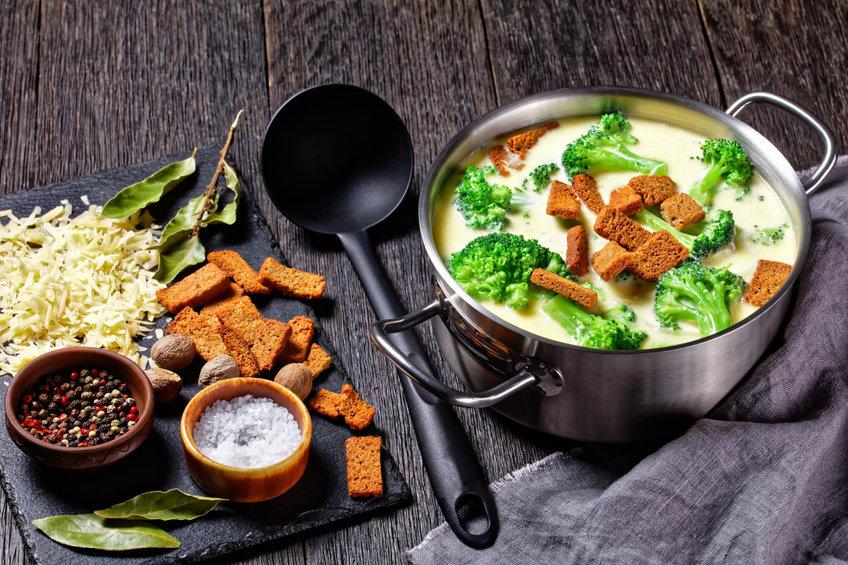
It’s time to get new cookware for your kitchen and you’re ready to make a long-term investment.
Quality cookware will pay dividends over time, giving you the confidence to try new recipes and improve your cooking skills.
Like all home cooks, you want to know what cookware lasts the longest.
There are two potential options in this area, and both are unique in their capabilities.
Let’s look at both so that you can buy the best cookware for your needs.
Stainless Steel Cookware – The LONG-LASTING Cookware for Most Home Cooks
 Stainless steel is easily the most versatile long-lasting cookware.
Stainless steel is easily the most versatile long-lasting cookware.
Stainless steel, indicated by the name, won’t stain or rust. It resists heat and warping. It looks great and feels premium.
The downside to stainless steel is that it isn’t a great heat conductor.
The best stainless steel cookware includes an aluminum core layer (sometimes more than one) to improve the overall structure and provide excellent heat distribution for even cooking.
Stainless steel lacks any coating to wear off, and the best sets are made entirely of metal without any plastic or silicone.
When asking what cookware lasts the longest, stainless steel is the easiest recommendation to make.
It doesn’t require any special handling properties, there’s no need to season the cookware, and most sets are safe to put in your dishwasher.
There are low-quality stainless steel sets, but these can be avoided by insisting on cookware that is advertised as being multi-ply, multi-clad, or bonded.
For the longest-lasting cookware choose a set that comes with a lifetime warranty.
You’ll have more confidence in your purchase and the option to get repairs or replacements should anything go wrong.
- For a great all-around set priced in the mid-range, consider the Cuisinart Multiclad Pro Stainless Steel Cookware Set. It is built to professional standards with three layers and comes with a lifetime warranty.
- If you are willing to splurge on premium cookware, you can consider the All-Clad D5 Cookware Set. This is the high-end home cookware and will easily last your lifetime. All-Clad uses five-layer bonding to ensure superior heat retention and distribution.
Cast Iron Cookware – A Durable but Niche Option

There has been a resurgence in the popularity of cast iron cookware in recent years.
This cookware is traditional with roots that go back generations.
Within the last century, it has largely been made obsolete by more versatile options that are easier to maintain.
Despite it not being as popular as it once was, there’s still a place for cast iron cookware.
Cast iron is one of the most durable materials and it will last for generations when cared for.
The trade-off for this durability is the extra maintenance involved.
Cast iron is vulnerable to rust when it isn’t seasoned. You can’t wash cast iron with detergent frequently like you would stainless steel.
If you do, you’ll need to treat the cookware with oil and bake it at a high temperature to fill in the porous metal and prevent corrosion.
These steps are simply too much for some home cooks, but others love the process.
There are technical advantages.
Cast iron retains heat better than any other cookware material, so it’s great for cooking meat and vegetables using residual heat.
Cast iron is also oven safe at any practical temperature, and it will never warp.
Think of cast iron as a complementary option for your kitchen rather than primary cookware.
You won’t find the complete range of pots and pans like you would in a stainless steel set.
For niche recipes and for experimenting with your cooking skills, a quality cast iron pan could be a great addition.
- This Lodge Cast Iron Skillet is great for frying, sautéing, sauces, casseroles, and cooking in an oven or under a broiler. It’s one of the longest-lasting skillets you can buy today.
Invest in Cookware that Lasts the Longest
For most people, durable stainless steel cookware will be the best all-around option.
If you want something unique for your kitchen, you could also consider cast iron.
Long-lasting cookware will give you a better return on your money, and you’ll always have reliable pots, pans, and skillets to turn to for your next culinary adventure.

